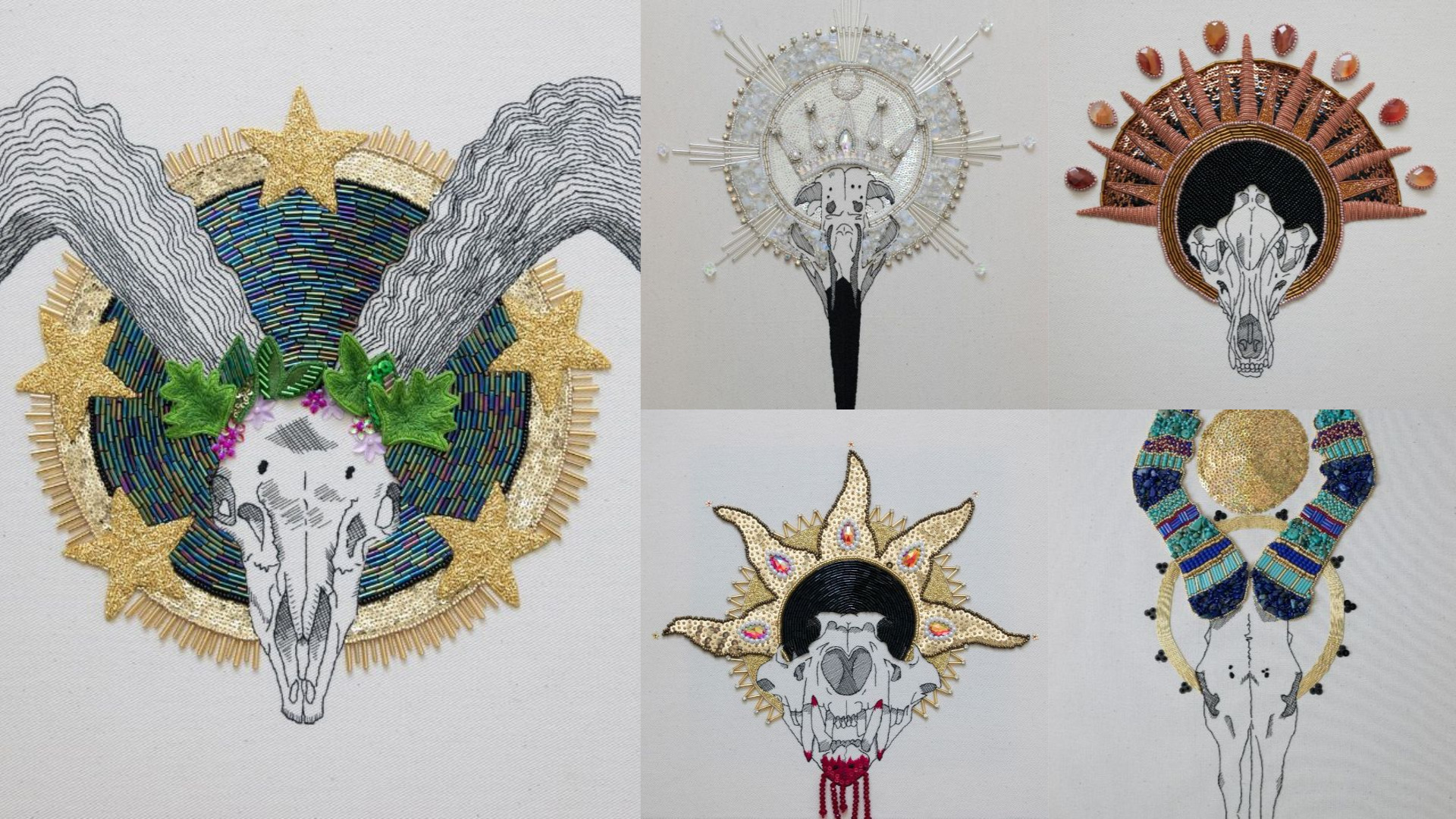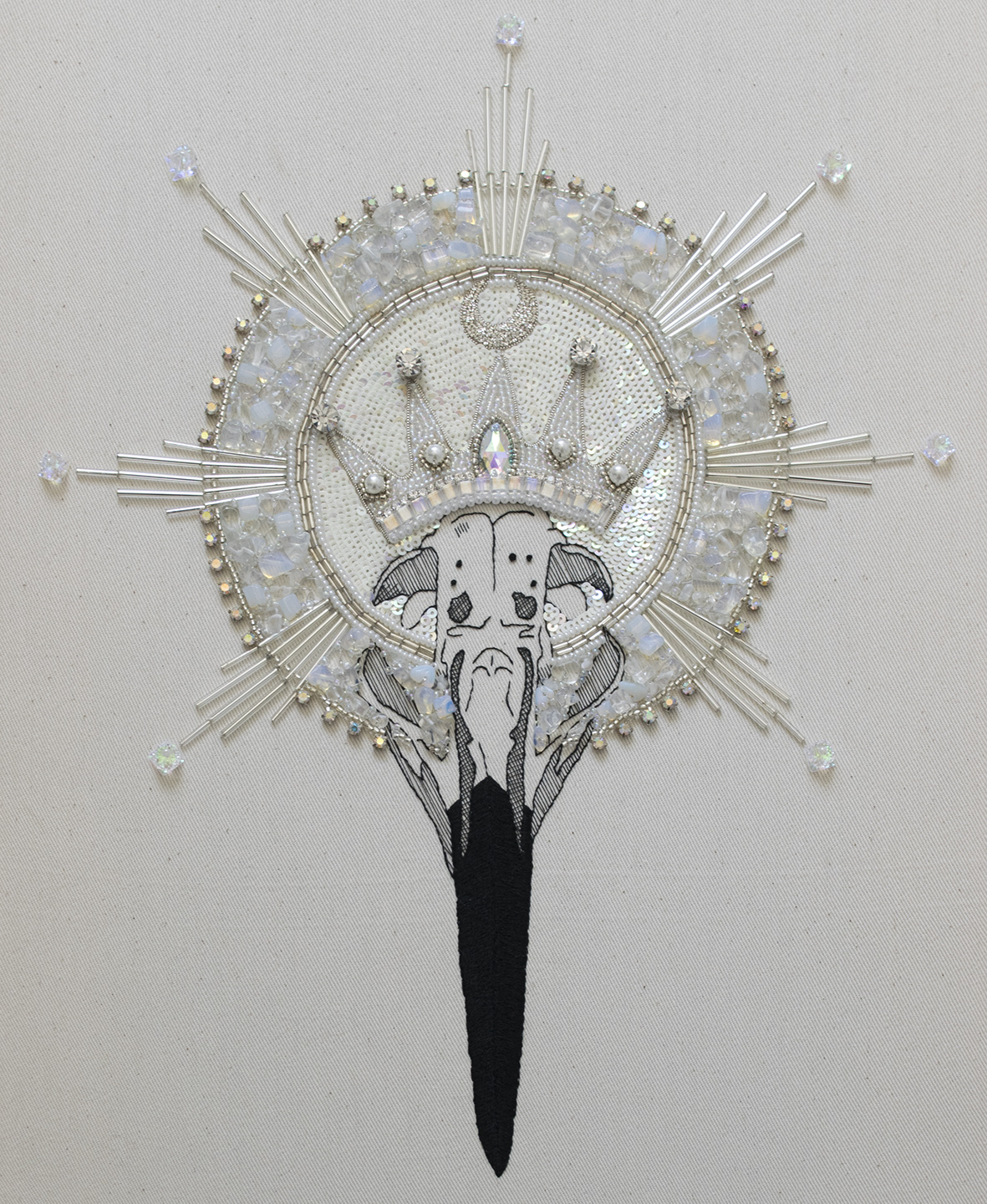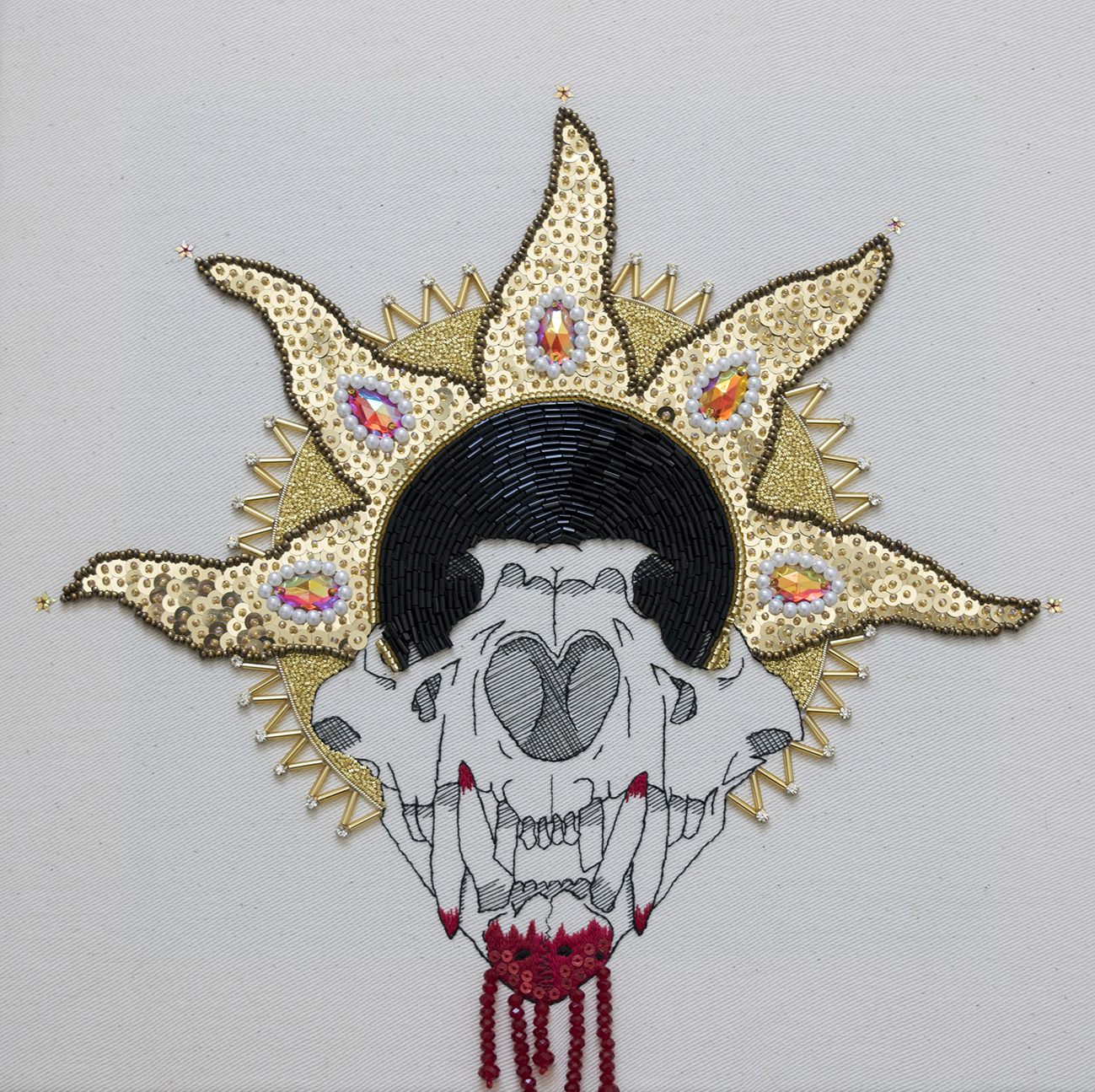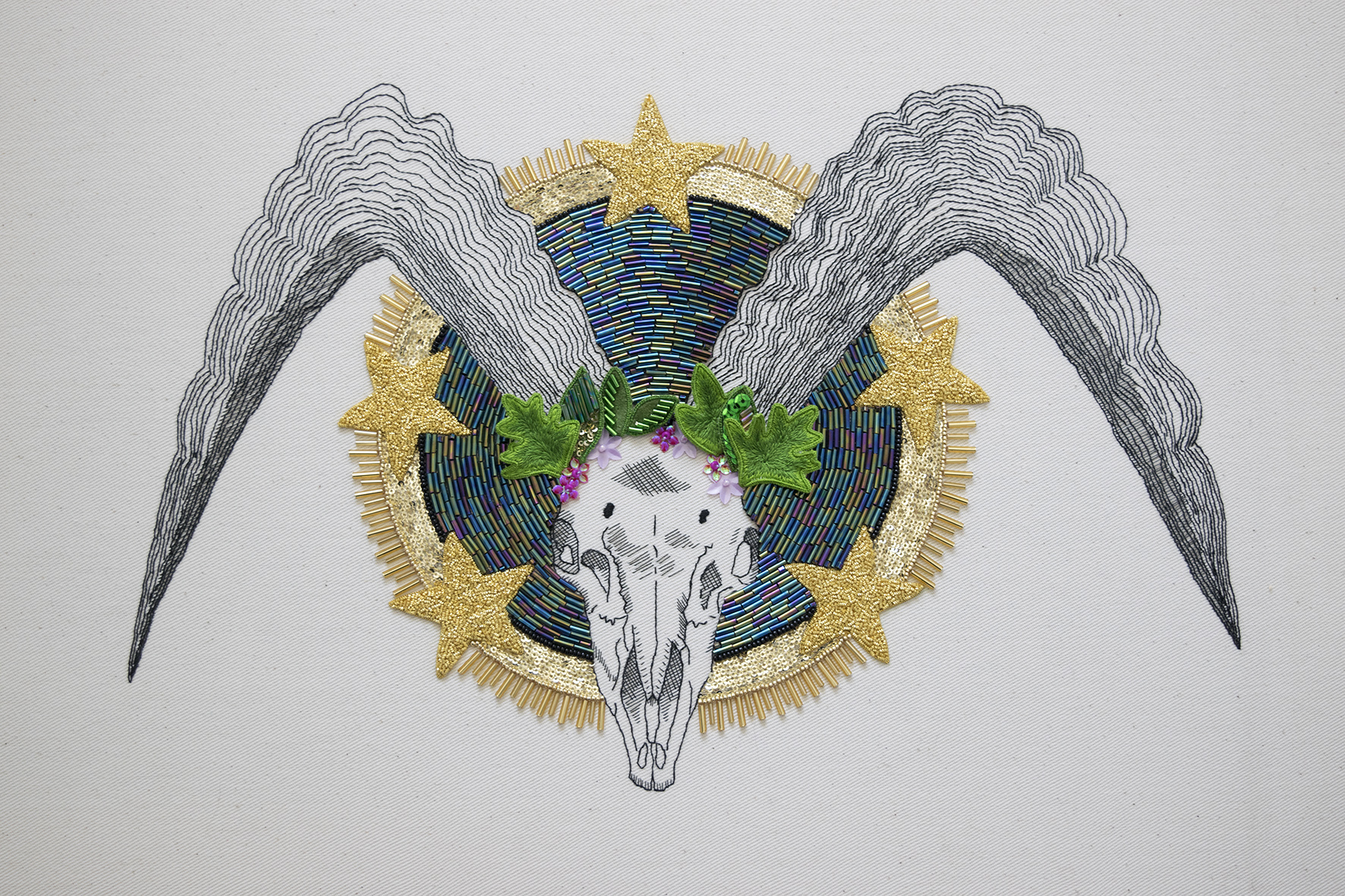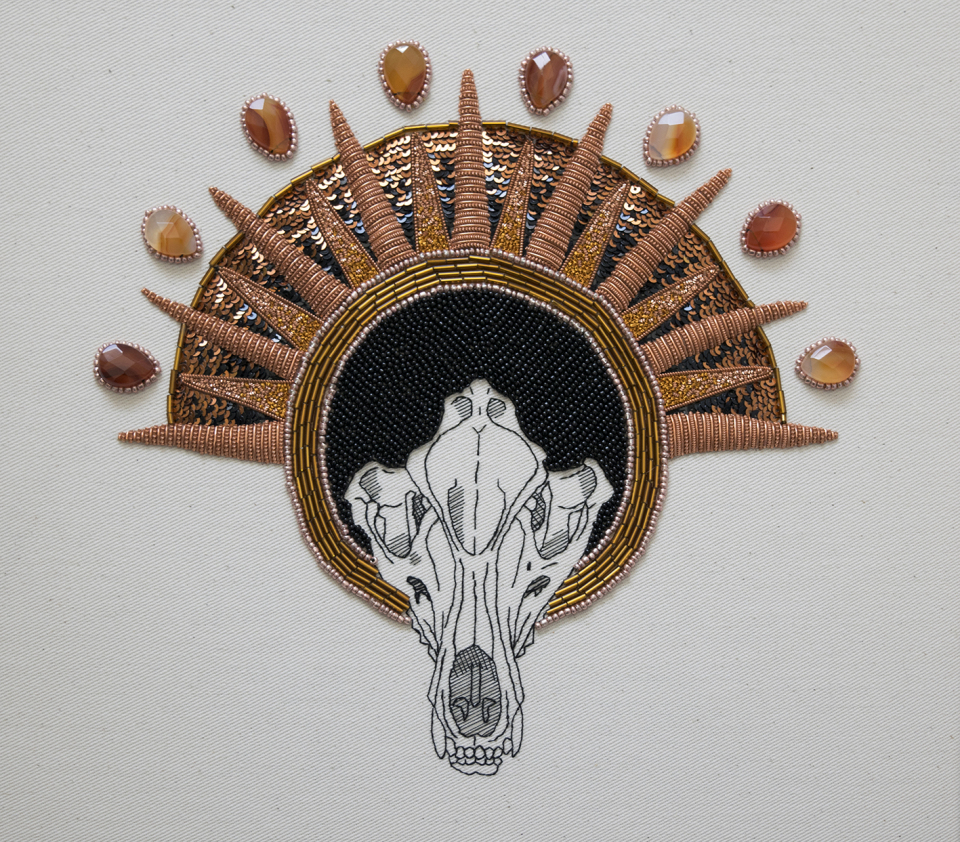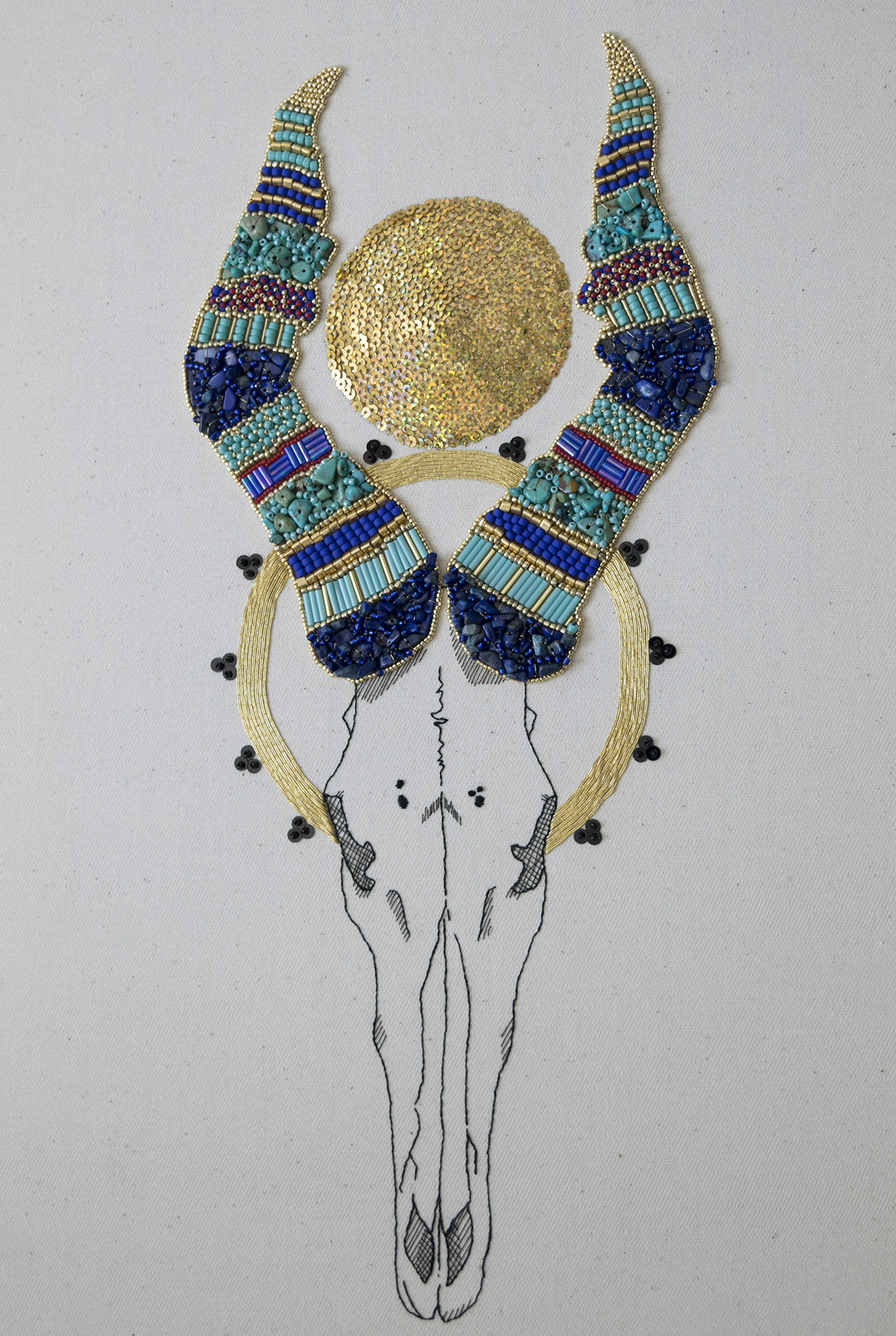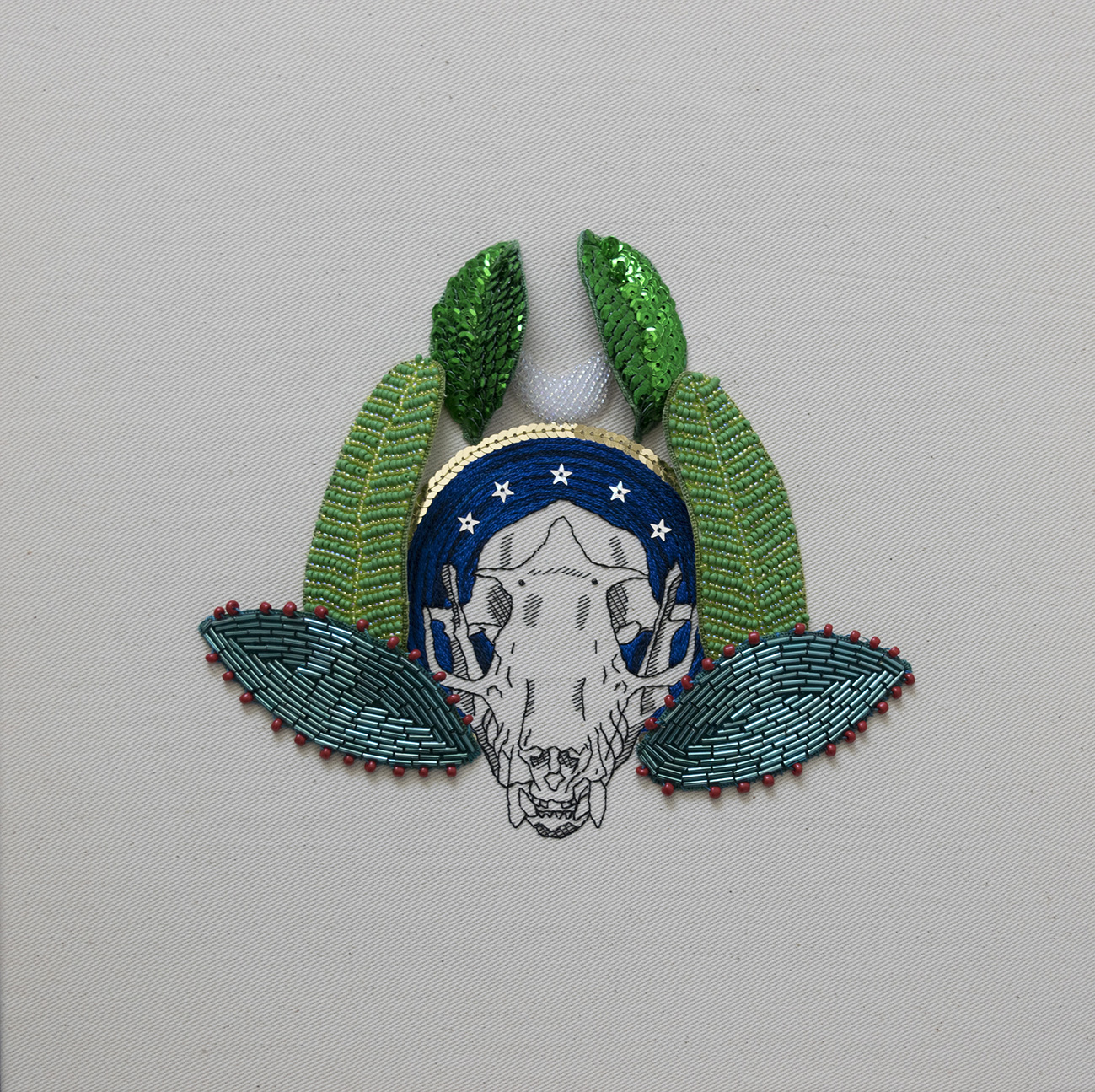How do we mark out grief for the loss of the world’s now-extinct species? For British artist Katie Tume, who works under the name Mother Eagle, the answer comes in the form of thread, beads, precious metals and gemstones. Her embroidered artworks commemorating the Tasmanian tiger, Barbary lion, dodo and other vanished wildlife are now on display at the ONCA art gallery in Brighton, England, as part of a worldwide series of events called Remembrance Day for Lost Species, held on November 30 each year.
Tume says the idea for the “Extinct Icons” in this exhibit came from seeing photos of reliquaries honoring Catholic martyrs and saints. “The idea of martyrs, persecuted in their lifetime for their beliefs or actions but now revered and regaled in death, made me think how we treat animals, specifically extinct ones,” she says.
She calls the animals she chose to depict “the poster children of the extinct hall of fame,” noting they frequently turn up in “top-ten”-style lists of extinct species. “In reading the stories of these endings, and ‘endlings,’ it became apparent to me how so many of these species’ demise were wrapped up in colonization, European exploitation, and extractive capitalism,” she says. “So much of this felt so familiar because the behaviors are still very real, present and very destructive. So, like those martyrs, persecuted in their lifetimes, I am interested in completing that cycle and illuminating them as saints.”
Persephone Pearl, founder of Remembrance Day for Lost Species and ONCA co-director, told me last year that the annual event helps people to understand that “learning to grieve is part of the process of healing our broken culture.”
This year’s Remembrance Day for Lost Species events include a dance competition in Madrid, Spain; a benefit concert with songs about endangered species in Chicago; a ceremony to recognize lost pollinators in Sacramento, California; and a workshop for children at the Redpath Natural History Museum in Montreal, Canada. A complete list of events, many of which run into early December, can be found here.

